Pink wildflowers brighten varied landscapes all across North America with a beautiful pop of color. These colorful pink flower wonders enthrall with various colors of pink, from delicate petals decorating woodland floors to bright blooms dotting dry deserts.
Whether nestled among verdant foliage or standing tall against rugged terrain, pink wildflowers contribute to the rich tapestry of nature’s beauty.
Different Types of Pink Wildflowers
Deptford Pink
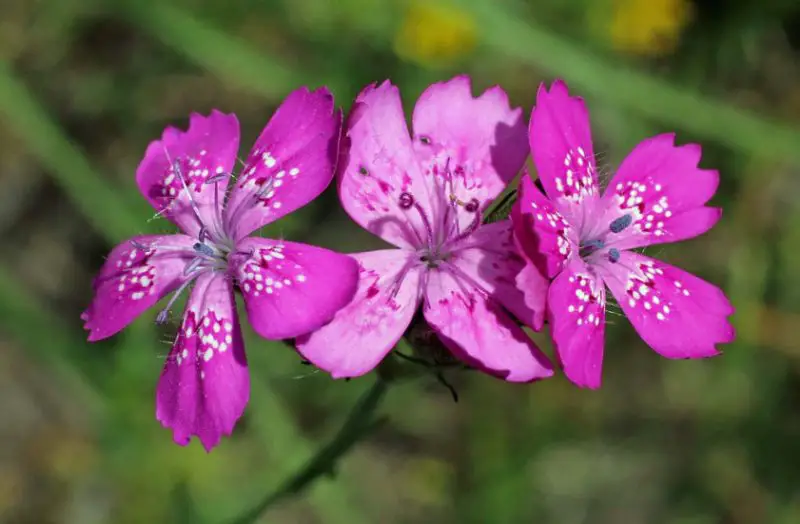
Deptford Pink (Dianthus armeria), a hairy green plant, features small pink flowers with 5 petals. Originally from Europe, it’s now found in North America as well. Variable in seasonality, it can be annual or biennial. Often cultivated for its wildlife-attracting blooms, it’s non-invasive in North America, typically flowering from mid-summer to September.
Common Soapwort
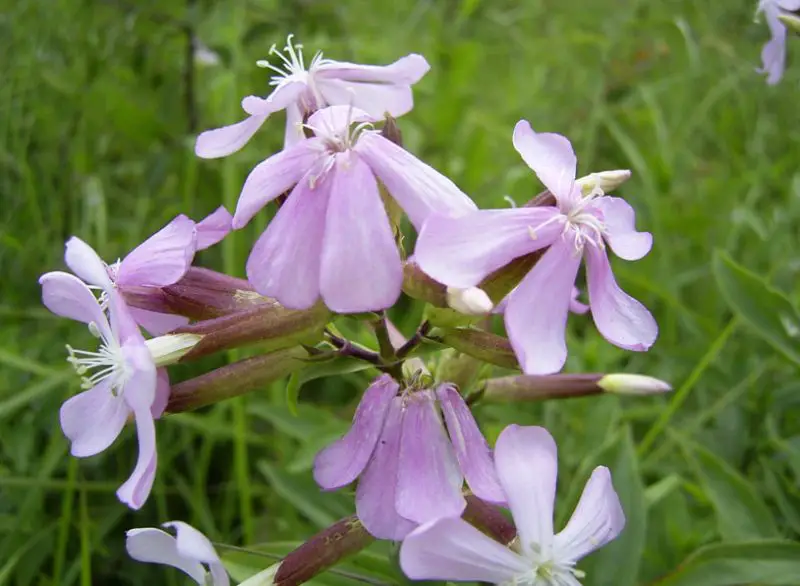
Common Soapwort (Saponaria officinalis) flaunts pink and white petals, with multiple blooms lasting merely 2-3 days annually. Its roots, utilized to create a soapy liquid, inspire its name. Growing up to 15-28 inches, it features opposing leaves along its stems, distinguishing it among other species.
Showy Milkweed
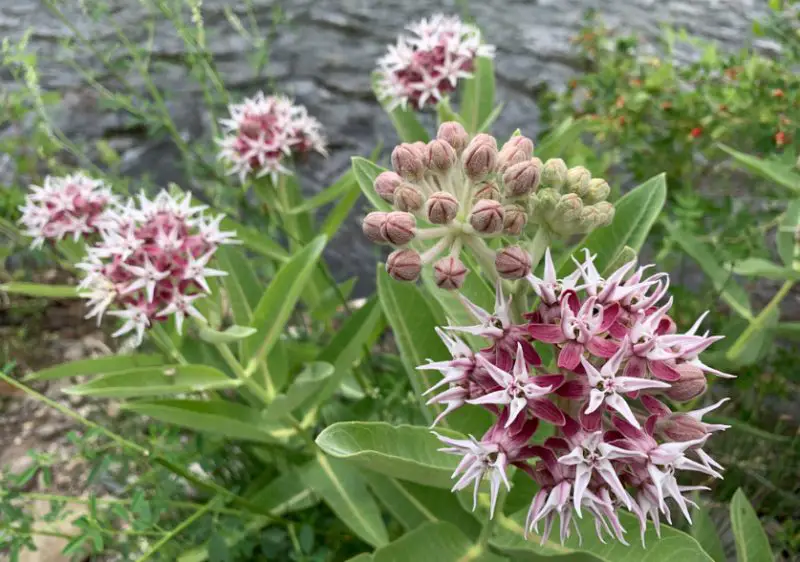
Showy Milkweed (Asclepias speciosa) stands out with its numerous pink flowers and diverse applications, native to North America and prevalent in Northern states. Its fibrous composition makes it valuable in construction materials. Caterpillars of various species feed on its leaves, some preferring younger, softer leaves in early summer. Invasive in several regions, efforts are made to control its spread.
Common Hibiscus
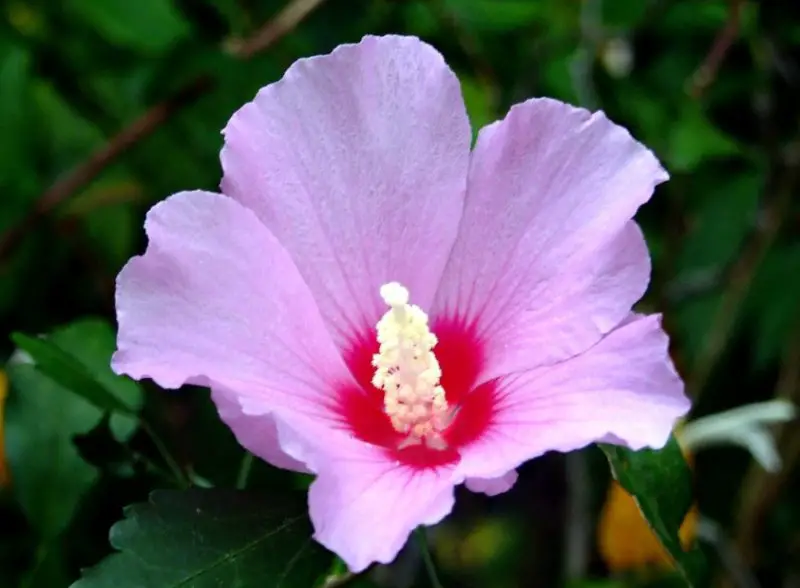
The Common Hibiscus (Hibiscus syriacus) is a prevalent pink wildflower with a global presence. Originally from Asia, it’s widely cultivated in North American gardens, boasting over 10 known cultivars, many with pink petals varying slightly in shape. ‘Woodbridge’ stands out for its deep pink hue. Beyond ornamental use, hibiscus flowers are also utilized for tea and culinary purposes in Asia.
Swamp Rose Mallow

Swamp Rose Mallow (Hibiscus moscheutos) showcases pink and dark pink hues, prevalent across North America, though endangered in many regions. Thriving near water, it grows up to a few feet tall and is often cultivated, offering various cultivars with red, dark red, and white blooms. Serving as a host for butterflies and moths, it supports species like the Gray Hairstreak Butterfly.
Tree Cholla
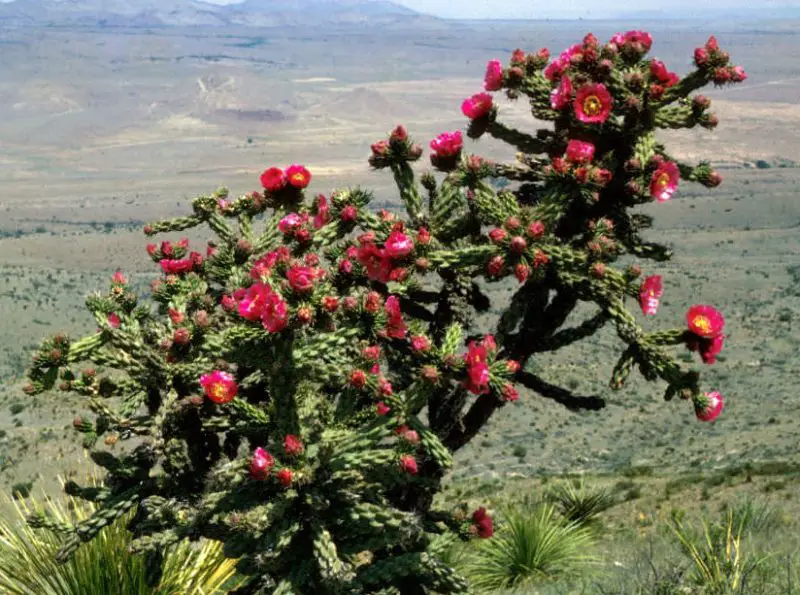
Tree Cholla (Cylindropuntia imbricata), indigenous to the Southwestern US, thrives in high-elevation habitats, even reaching mountainous regions above several thousand feet. Resembling small trees, they bear dark pink flowers and produce small yellow fruits. Typically around 5 feet tall, some specimens can tower up to 15 feet, making them a striking feature of the landscape.
Fall Phlox
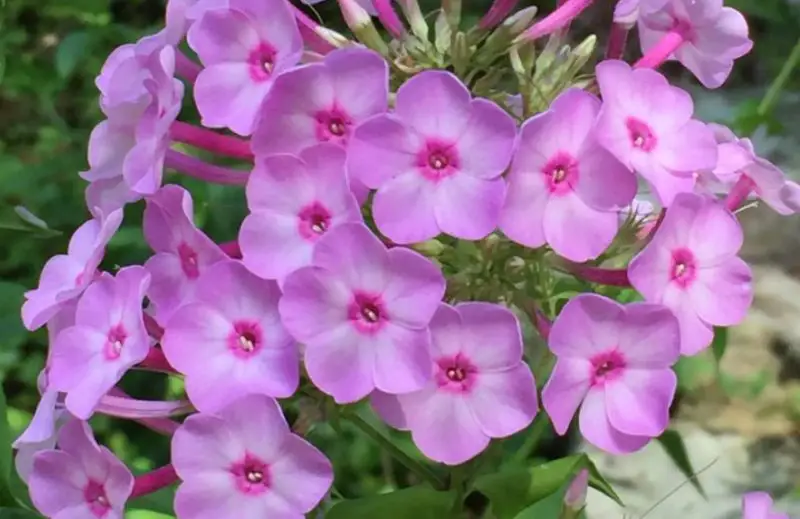
Fall Phlox (Phlox paniculata), commonly recognized as Summer Phlox, is a quintessential pink wildflower blooming in the peak of summer heat. With numerous cultivars sporting varying pink hues, some even boasting rare red and white variations, it’s a staple of gardens. Extracts from Fall Phlox find utility in health applications, including laxatives.
Rugosa Rose
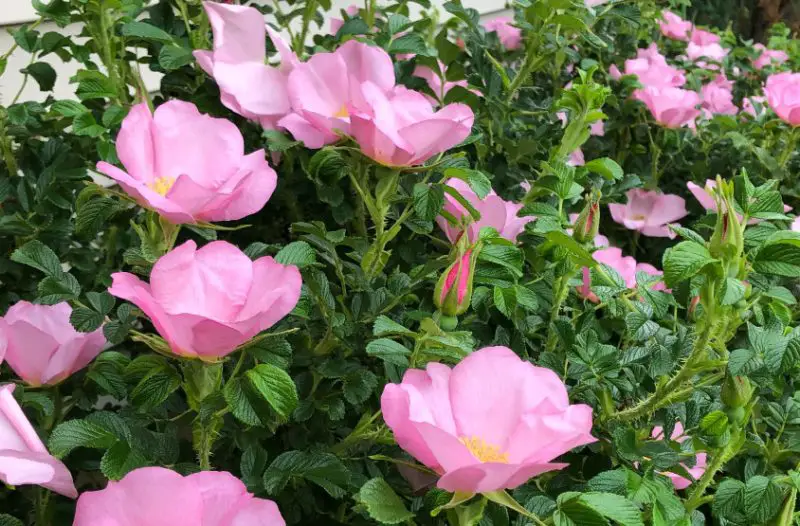
Originally from Japan, the Rugosa Rose (Rosa rugosa) has spread globally, its pink blooms adorning landscapes worldwide. Known for its resilience, it readily hybridizes and crosses with other roses. Flowering in late summer or early fall, it faces endangerment in parts of Asia due to extensive exports, while becoming invasive in some US regions. Its ability to thrive in salty beach habitats adds to its versatility.
California Wild Rose
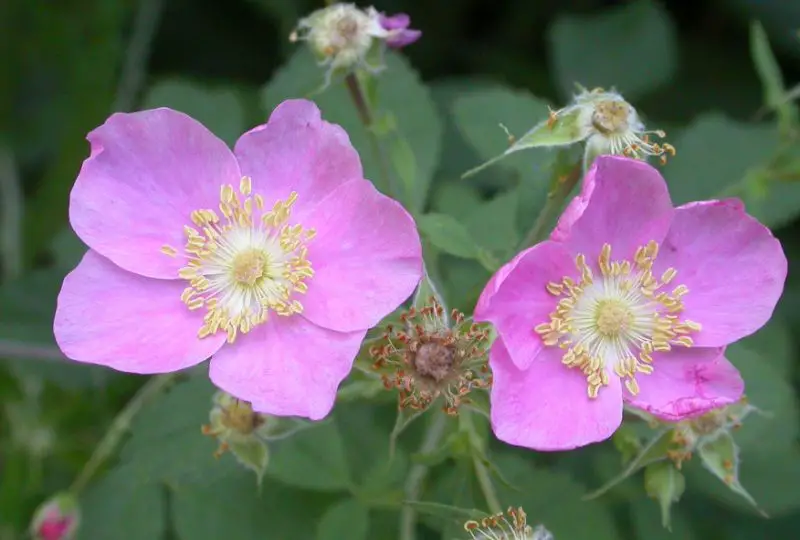
Rose californica, also known as the California wild rose, grows well up to 7,000 feet in wet soils and produces enormous pink flowers. It is the perfect option for revegetating regions damaged by industry or fire because there are several cultivars available. Up to the early fall, Southeast-based bees visit its blossoms. Its rose-colored blossoms can also be used to different meals or brewed into tea.
Red-Flowering Currant

Ribes sanguineum, or red-flowering currants, grow up to ten feet tall and have dark pink or crimson blossoms. Their brilliant show occurs in the spring, adding to Western North America’s bright flora. Their pollen is consumed by early-season visitors such as hummingbirds. Cultivated in gardens and parks, attempts to naturalize them outside of North America must be cautious to avoid the introduction of invasive species.
Marsh Fleabane
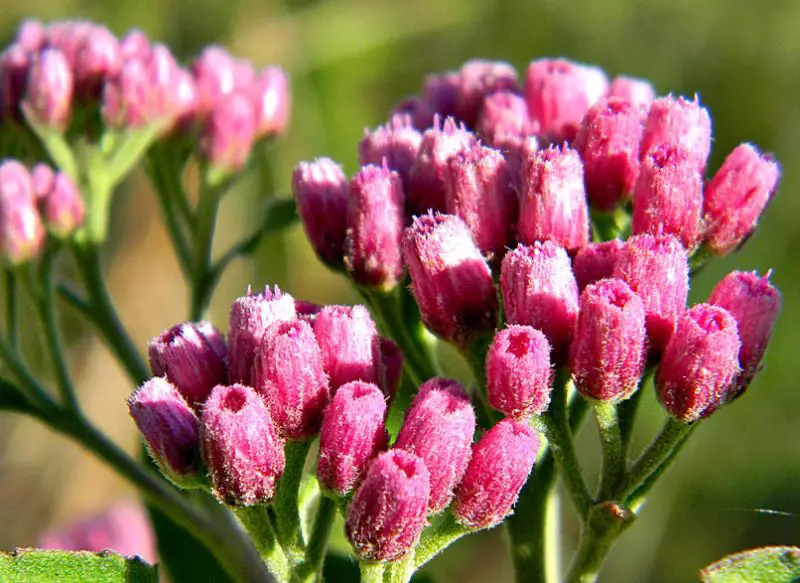
Marsh Fleabane (Pluchea odorata) features pink inflorescences, comprising clusters of small flowers with versatile applications. Its tea serves as a diuretic, prized for its floral taste and aromatic qualities. Cultivatable and reaching heights of 2-3 feet, it’s favored as an alternative to shorter rose species in gardens.
Largeflower Pink-Sorrel
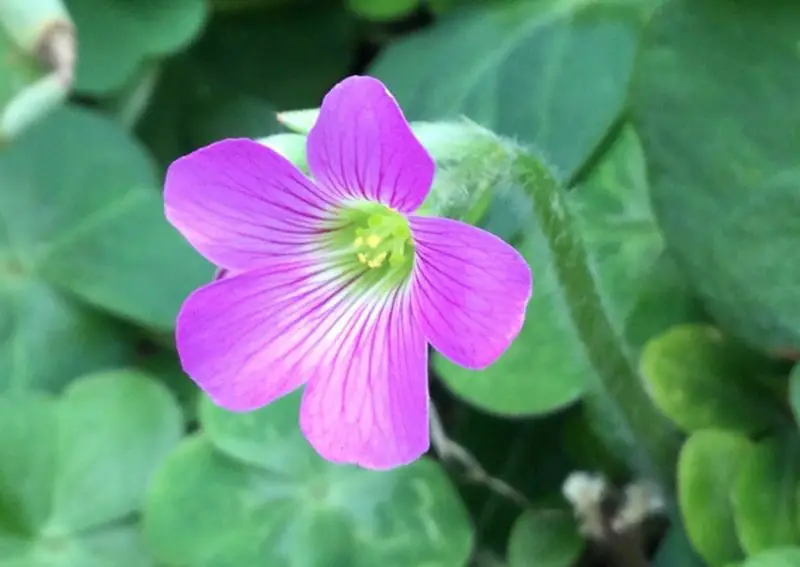
Largeflower Pink-Sorrel (Oxalis debilis) displays pink blooms and thrives globally, including North America. It prefers mixed and deciduous woodlands. Cultivated for its pink-flowered cultivars, its edible flowers are primarily consumed in China. When cultivated, it may encounter issues like drying or yellowing leaves due to diseases.
Annual Honesty
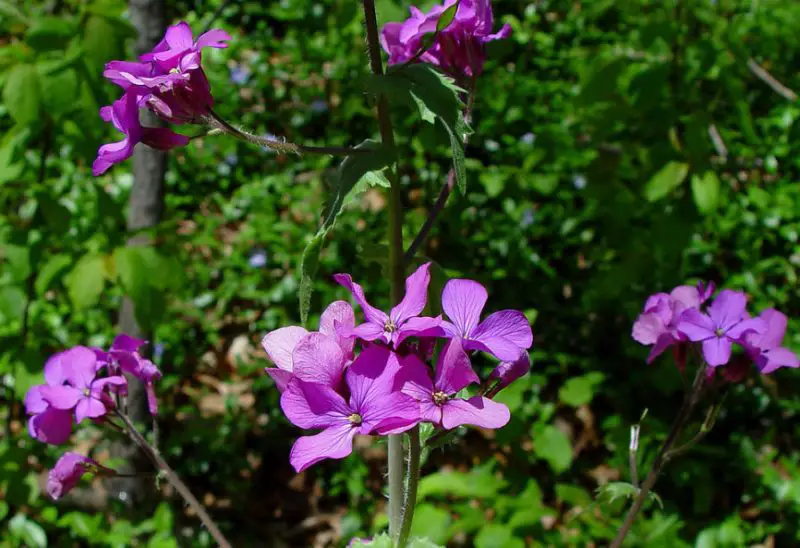
Annual Honesty (Lunaria annua) and its cultivars showcase pink and white flowers, distributed across North America without becoming invasive. Blooming from spring to summer, it features dark pink flowers with stemless large leaves. Adaptable to part shade, it grows several feet tall in woodland environments. With long fibrous roots, it may appear as an annual or biennial plant.
Obedient Plant
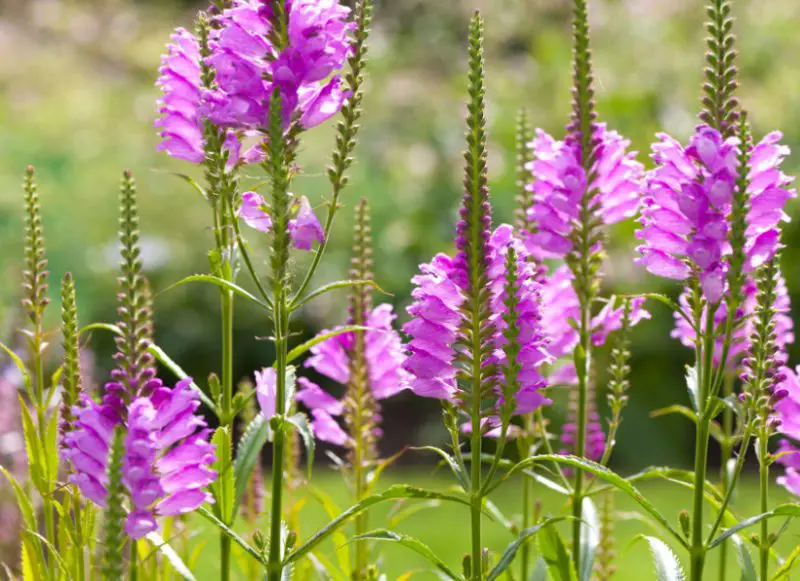
The pink blooms of the Obedient Plants (Physostegia virginiana) grow horizontally and are grouped in bunches on spike-like stems. Varieties include lavender and white flowers. Although they require modest attention when grown inside, their tall size frequently necessitates support to keep them from toppling over with the weight of their blooms.
Woods’ Rose
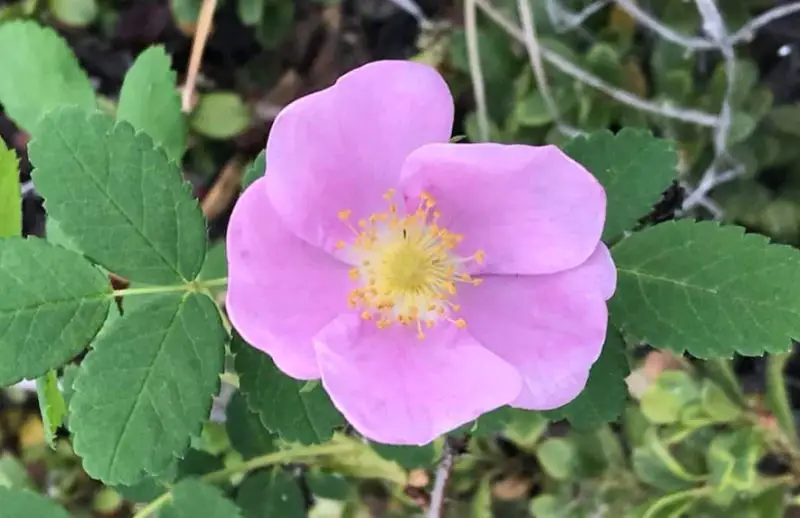
Woods’ Rose (Rosa woodsii) flourishes in disturbed land and woodlands across North America, often lining roadsides. Its dark pink petals with central yellow sections adorn the landscape. Thriving in Southwestern and Western territories, it reaches elevations of up to 11,000 feet in mixed, deciduous, or pine woodlands. Adaptable to gardens, its colorful and fragrant flowers make it a prized addition.
Pacific Bleeding Heart
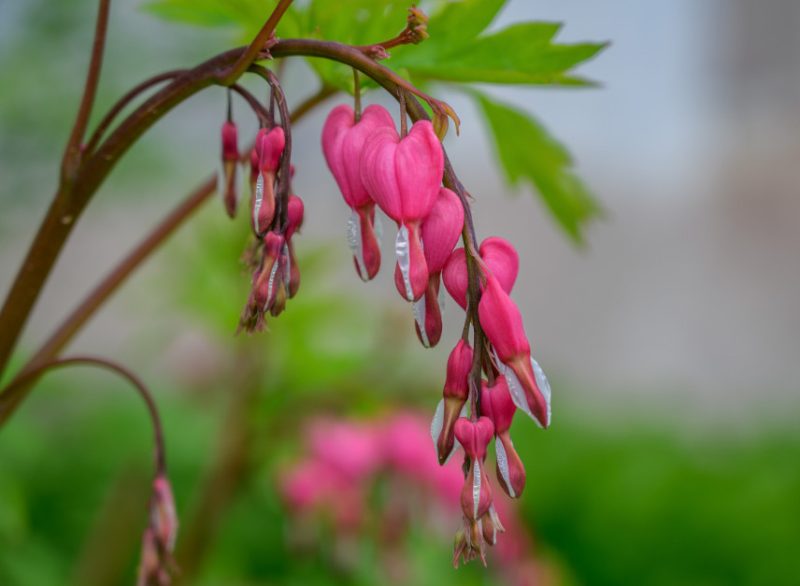
The Pacific Bleeding Heart (Dicentra formosa) can grow up to 28 inches tall and has four pink or purple flowers. It is a native to the Pacific region of North America, and its tapering blossom form helps identify it. It grows from Los Angeles to Vancouver and is available in burgundy, red, and green cultivars. It is poisonous to cattle when cultivated, therefore proceed with caution.
Redmaids
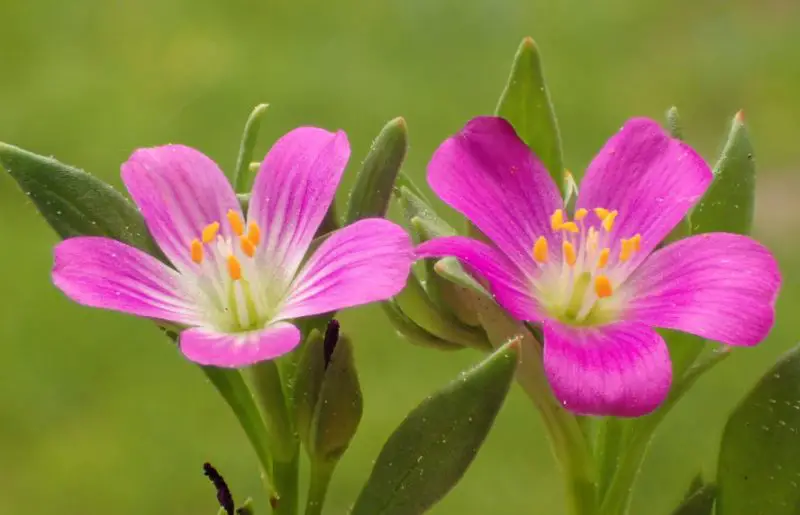
Redmaids (Calandrinia menziesii), native to North America’s West Coast, feature an erect growth pattern reminiscent of tulips. Their flowers range in shades of pink, including dark purple, purple, and lavender. Thriving in disturbed habitats like slopes and paths, they reach up to 15 inches in height, with leaves extending up to 3 inches.
Henderson’s Shooting Star
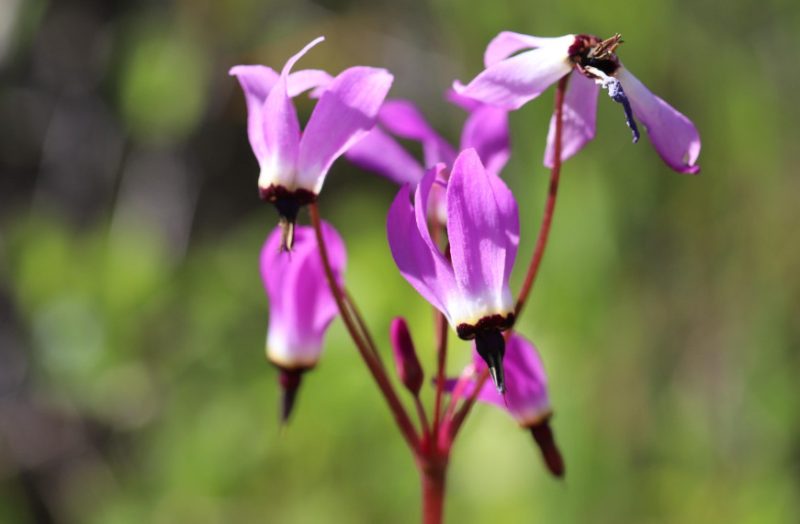
Henderson’s Shooting Star (Primula hendersonii) thrives in Western North American woodlands and waterside areas, extending from California to Canada. Adorned with pink, yellow, and white flowers, it reaches up to 6,000 feet in moderate elevations. Blooming in summer, some parts are edible when cooked, though caution is advised. Its striking appearance makes it a standout addition to gardens.
Fringed Willowherb
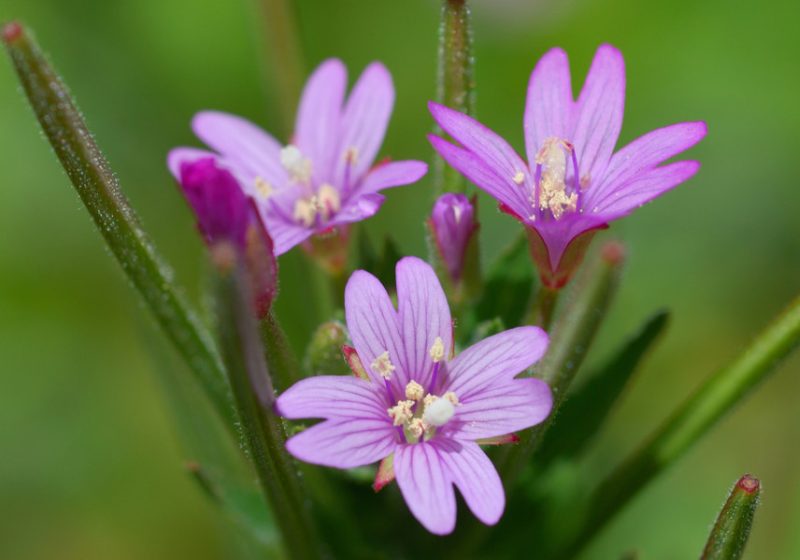
Introduced to North America and Europe, Fringed Willowherb (Epilobium ciliatum) towers up to nearly 5 feet, bearing red or pink flowers in summer. Native to Canada, it has spread across much of the United States, thriving in moist habitats and ditches along woodlands, even at elevations of up to 4,000 feet. It’s adept at revegetating wasteland areas.
Dwarf Checkermallow
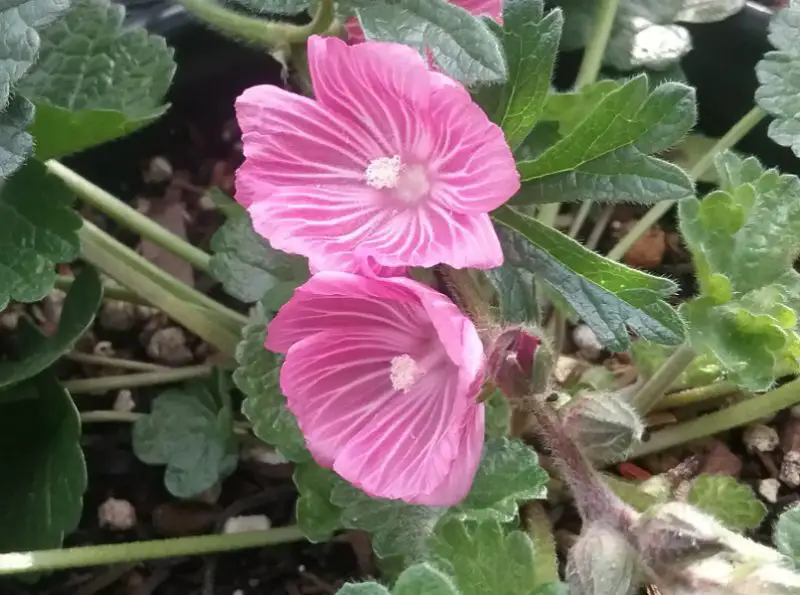
Dwarf Checkermallow (Sidalcea malviflora) stands at 20-30 inches tall, showcasing dark pink flowers with prominent veining. Indigenous to North America’s West Coast, it’s a favorite among local wildlife, with butterflies like the West Coast Lady’s Caterpillar feeding on its leaves and flowers.
Winecup Mallow
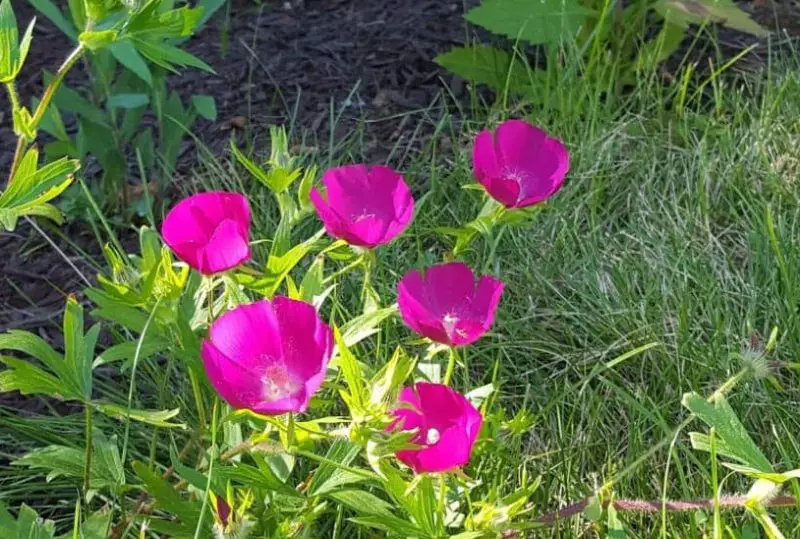
The Winecup Mallow (Callirhoe involucrata) boasts an erect growth pattern with dark pink flowers and evergreen foliage. Growing in clusters, it reaches up to 3 feet in height, favoring rocky or sandy soils in full sun. Common in North American prairies, it thrives in well-drained, dry soils and attracts hummingbirds and insects without drawing pests.
Winecup Clarkia
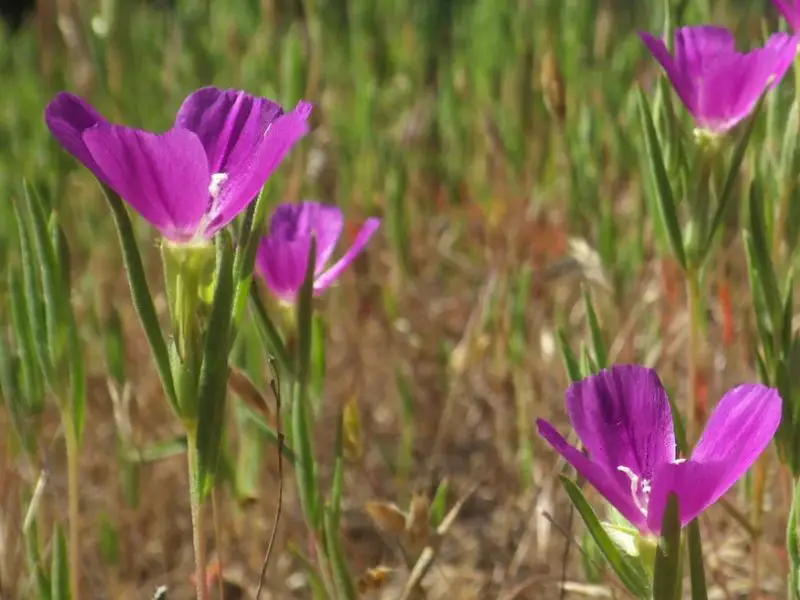
Winecup Clarkia (Clarkia purpurea) is a prominent pink wildflower found in Southwestern and Southern US states. With elongated leaves and pink to purple flowers, it towers at 36 inches and spreads over 10 inches. Thriving in well-drained garden soils, it self-propagates through spring blooms, scattering seeds for future growth.
Sheep Laurel
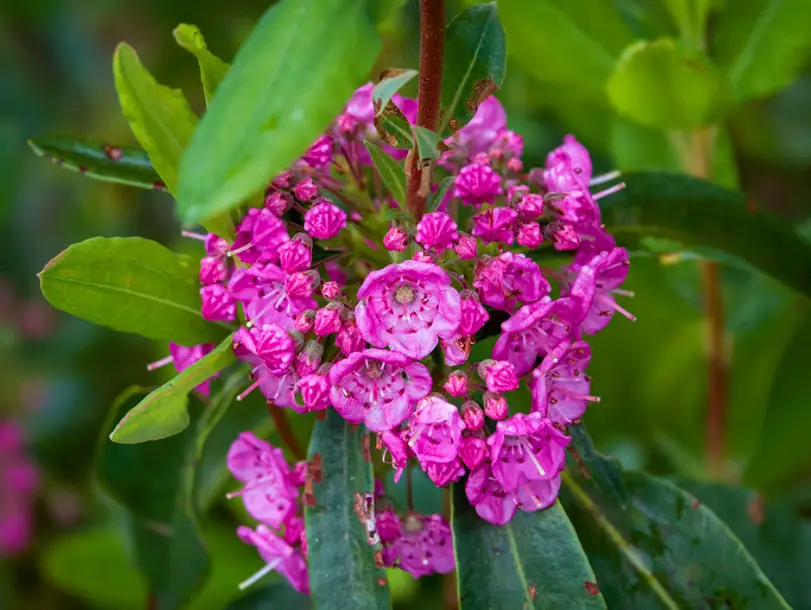
Sheep Laurel (Kalmia angustifolia) thrives in dry soils, showcasing clusters of tiny pink flowers. Common in Eastern North America, it’s among the first to colonize post-fire landscapes. While prized for its decorative evergreen foliage in gardens, caution is advised around livestock due to its andromedotoxin content, harmful to sheep, calves, and pigs.
Pipsissewa
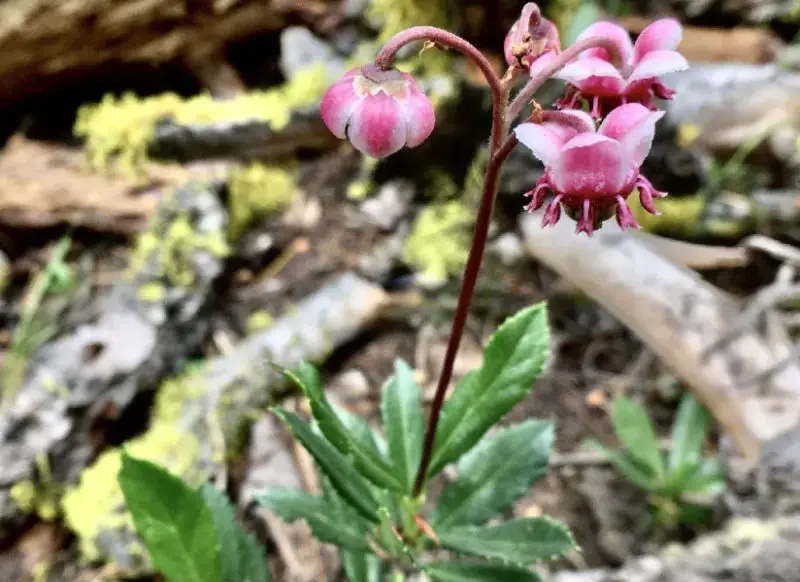
Pipsissewa (Chimaphila umbellata) thrives in temperate climates worldwide, flaunting white and pink flowers with medicinal properties. Typically found in well-drained soils of temperate woodlands, it features long, circularly arranged leaves. Despite its declining numbers due to utilization in food and drink industries like craft beer, it remains a cherished sight in mixed woodlands.
Wax Currant
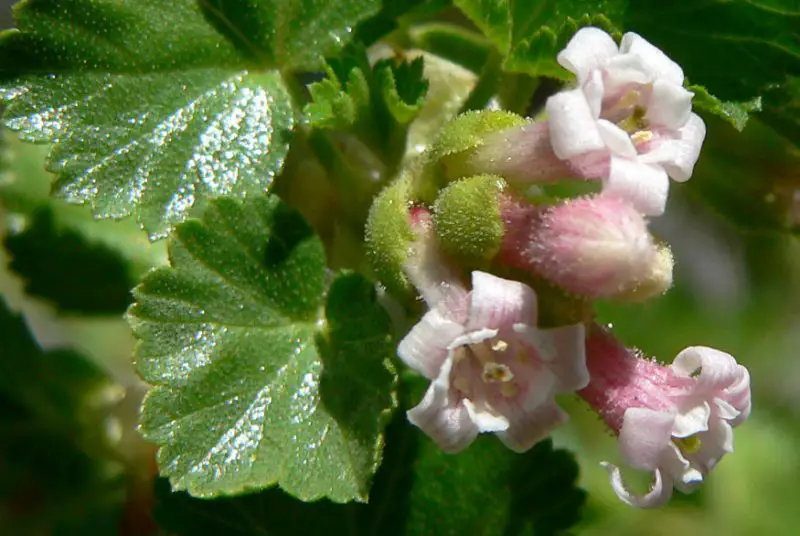
Wax Currant (Ribes cereum), also dubbed The Whisky Currant, is a North American shrub with pink flowers. Some specimens can tower up to 6 feet. Its orange-red berries are consumed by natives, though tasteless. However, consuming large quantities may be harmful. The leaves emit a foul odor and are inedible.
Chaparral Bush-Mallow
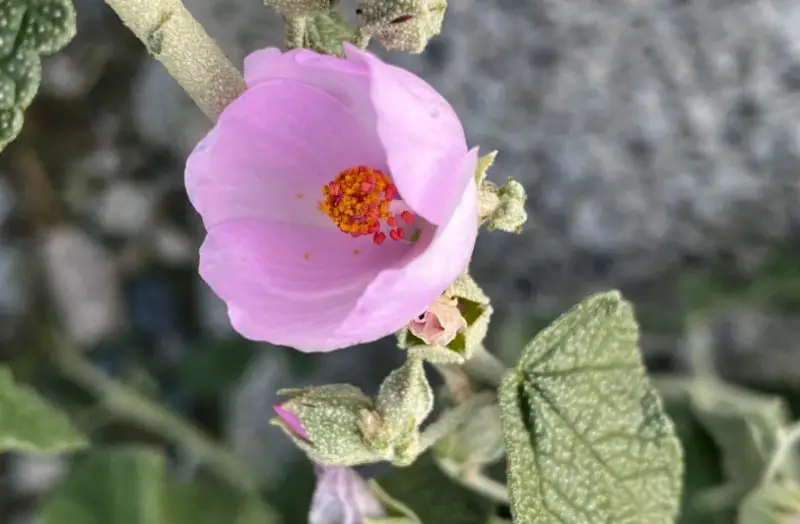
Chaparral Bush-Mallow (Malacothamnus fasciculatus) is a pink mallow native to California’s chaparral. Adorned with globular, bright pink flowers, it grows as a tall shrub, reaching up to 16 feet. Cultivated varieties in California and Baja California include those with white flowers.
Swamp Rose
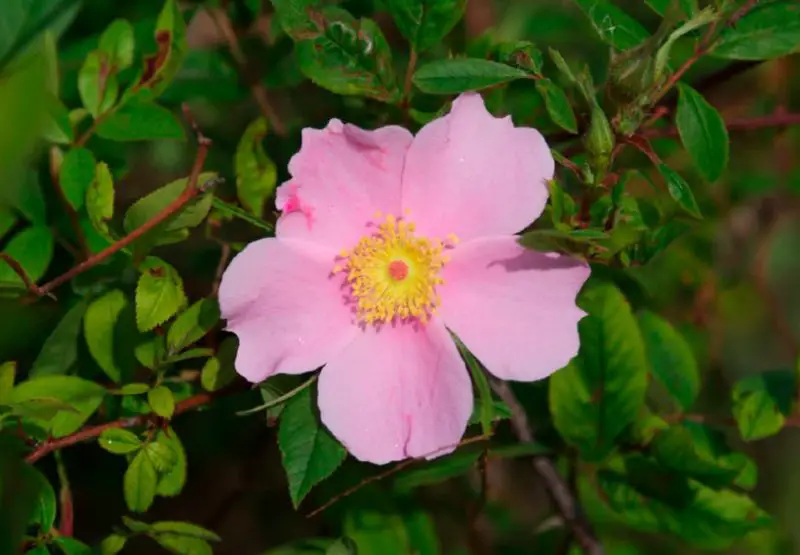
Swamp Rose (Rosa palustris) thrives in moist environments like lakes, ponds, and swamps, notably flourishing in Florida. With tall growth and rapid spread, it’s a common sight across North America, featuring bright pink flowers. Flowering in summer, it provides food for wildlife, with moth caterpillars occasionally feeding on it without causing significant harm.
Carolina Spring-Beauty
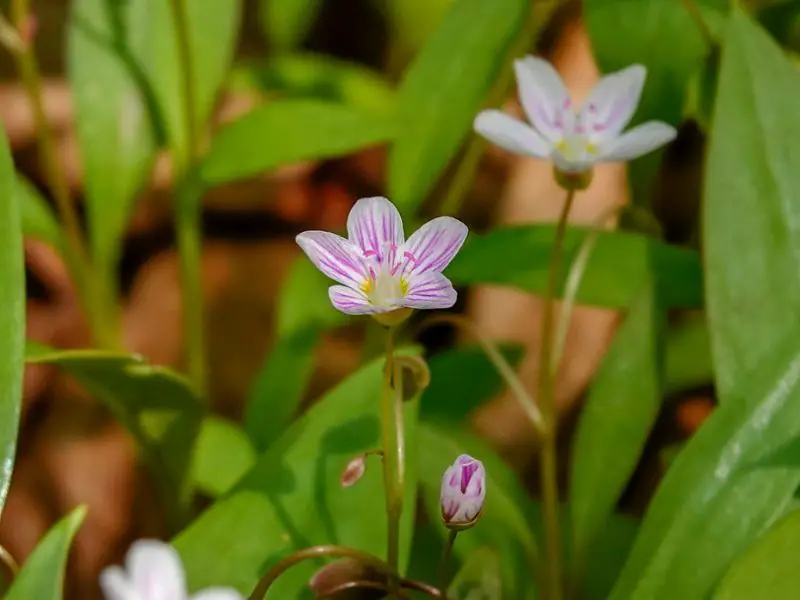
Carolina Spring-Beauty (Claytonia caroliniana), first found in Virginia, features bright white flowers with pink-striped veins. Growing close to the ground, its green leaves are small, reaching heights of 3 to 10 inches. Edible and once common, they’re now rare due to overharvesting in some regions, favoring open woodland spaces.
Cut-Leaved Crane’s-Bill
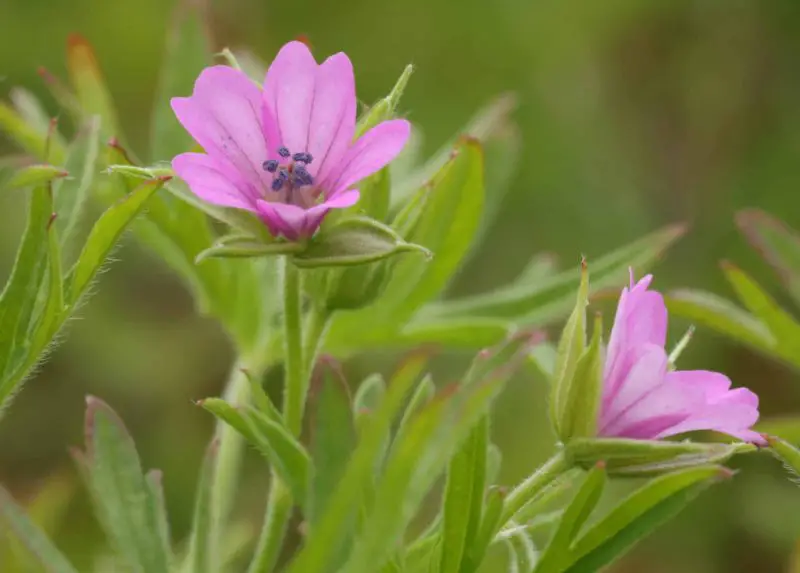
Introduced to North America, Cut-Leaved Crane’s-Bill (Geranium dissectum) boasts dark pink flowers with pink petals encircling a green center. Native to Europe, it blooms in summer and can be cultivated in gardens, its flowers enduring for an extended period. Outside the blooming season, its green leaves, adorned with short white hairs, remain prominent.
Pinxter Flower

Pinxter Flowers (Rhododendron periclymenoides) grace woodlands with their pink and white blooms, prevalent in the Central and Southern US states and Southeast swamps. However, they carry high toxicity, harmful to insects and potentially humans through contaminated honey. Despite this, their rapid spread aids in preventing soil erosion, making them useful in revegetation efforts, particularly after fires.
Wild Basil
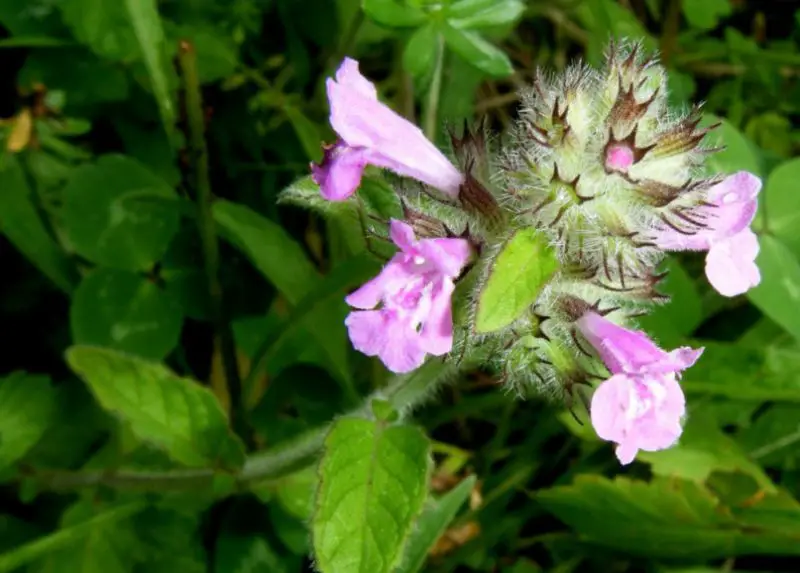
Wild Basil (Clinopodium vulgare) is a versatile pink wildflower found in Europe and North America. Its highly aromatic leaves are edible raw or cooked and can be dried for long-term storage. With clusters of tiny pink flowers atop its short stature, it’s also utilized as an herb for its astringent properties.
Western Ironweed
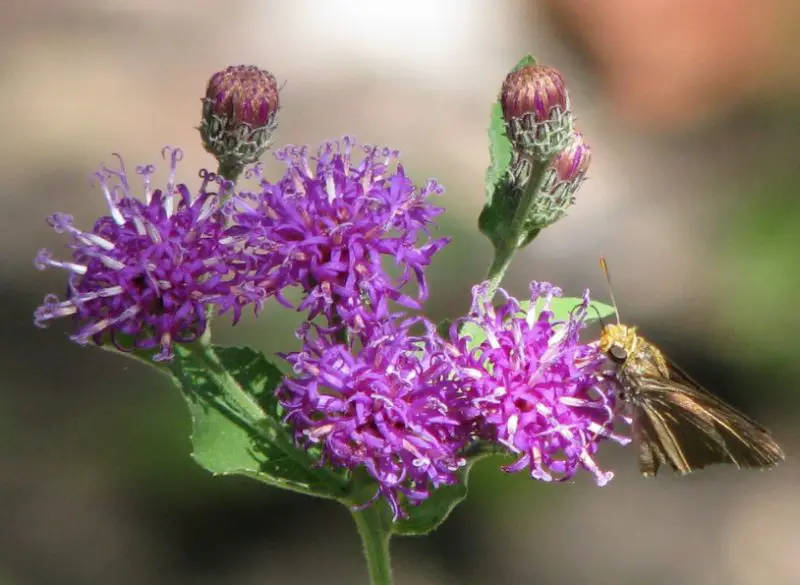
Western Ironweed (Vernonia baldwinii) displays dark pink, purple, or violet flowers and typically reaches heights between 3 to 5 feet. Thriving in moist environments, it may also grow in rocky or limestone terrains. With clusters of tiny flowers measuring up to 6 inches in diameter, it remains in bloom late into the season, enduring until temperatures significantly drop.
Common Lilac
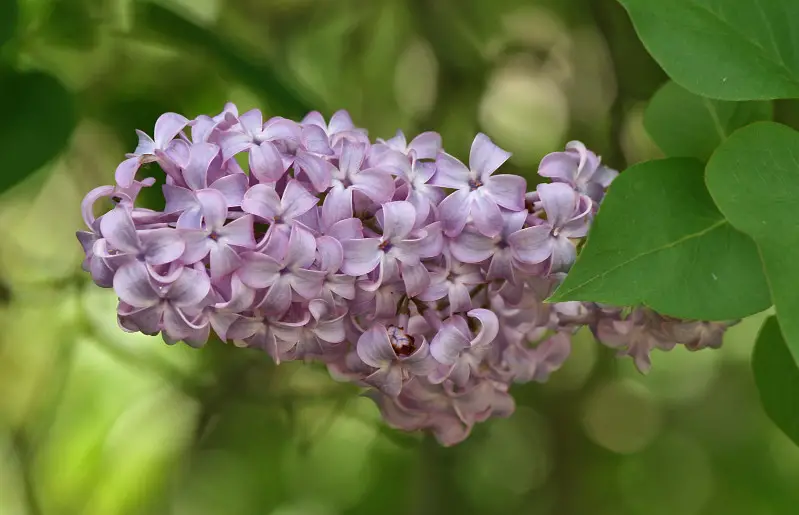
Common Lilac (Syringa vulgaris) offers highly fragrant pink blooms in various cultivars, including pale pink, deep pink, and even red varieties. Its edible flowers add sweetness to dishes. Introduced to North America, it thrives around homes and inhabited areas, primarily cultivated for its ornamental value in gardens.
Elegant Clarkia
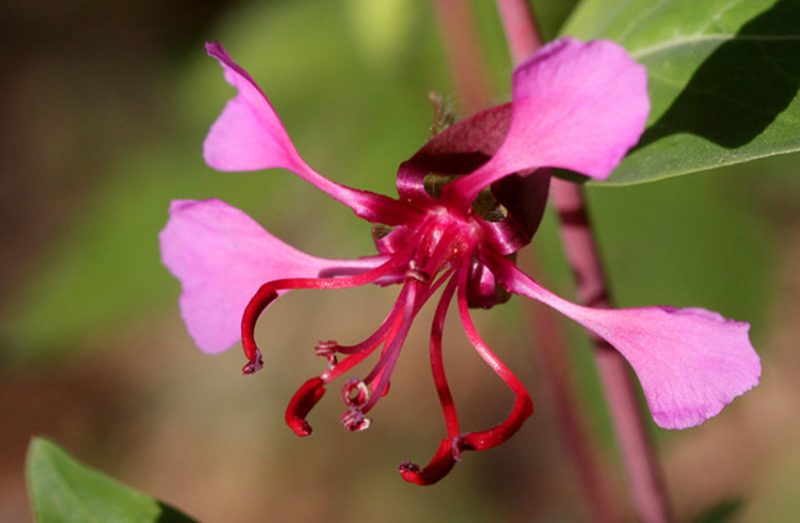
The Elegant Clarkia (Clarkia unguiculata) presents pink, pink-to-red, and purple flowers, thriving in the habitat provided by deciduous trees like oaks. Flourishing in moist areas, it spreads through self-multiplication or pollination.
In gardens, it prefers moist soil under full sun or partial shade, often cultivated in containers with nutrient-rich soil and regular watering. It reaches heights between 18 and 36 inches, with seeds capable of overwintering to emerge in spring.
Carolina Rose
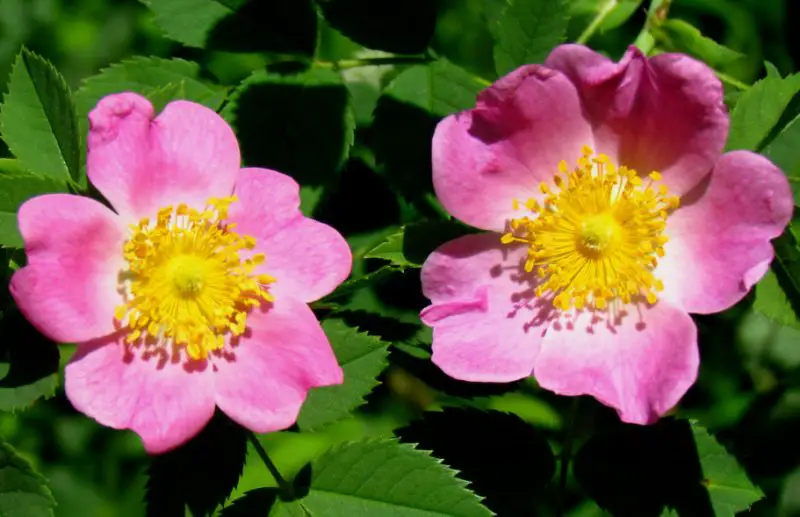
The edible wildflower known as the Carolina Rose (Rosa carolina) is widely distributed in the Eastern United States and Canada. Its pink or pink-hued orange blossoms are prized for their sweet flavor and are perfect for desserts.
Prosperous in grasslands, forests, and fields, they are also frequently seen in gardens, where they thrive in well-drained soils with either full or partial shade. Certain plants can grow to be above 40 inches tall, depending on the soil’s nutrients and geographical conditions.
Twinflower
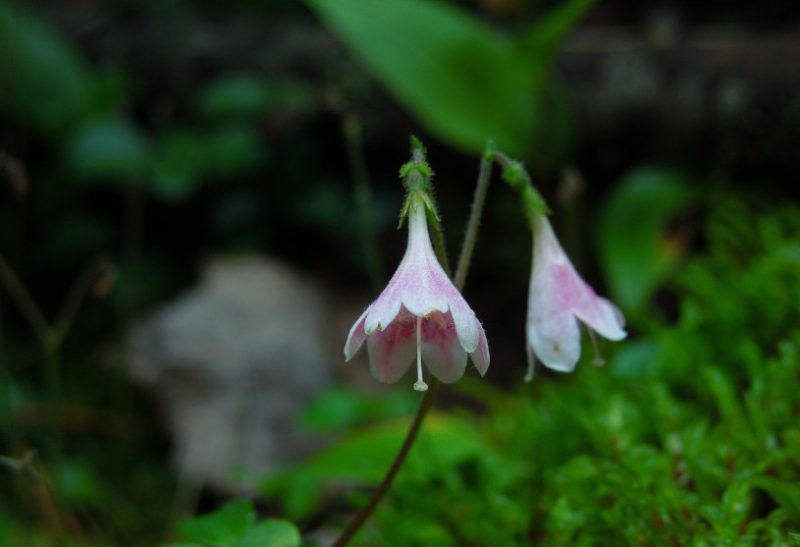
Twinflowers (Linnaea borealis) are small flowering shrubs prevalent in woodlands across North America and Europe. Blooming with multiple tiny pink flowers in summer, they’re endangered in some US Southern states. Climate change may impact their status. With varying heights up to 15 inches, they thrive in open plains and diverse woodlands throughout the US.
Showy Orchis
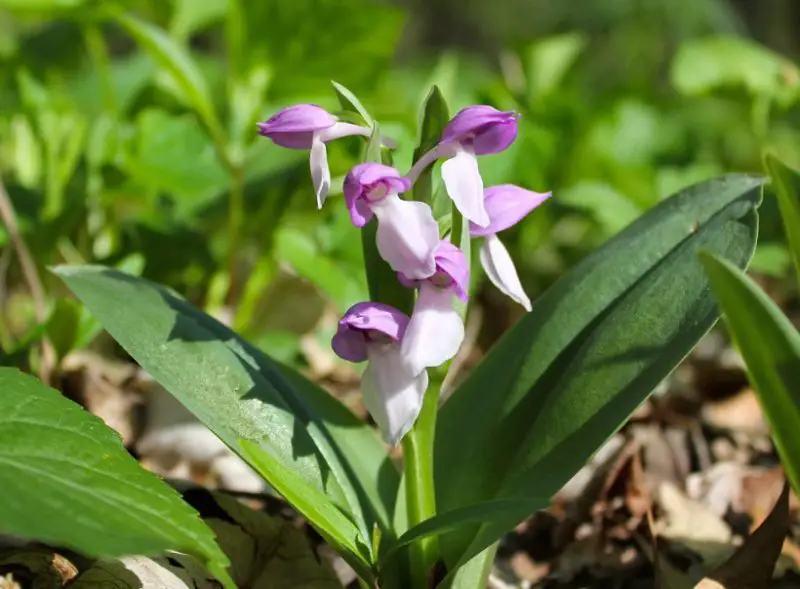
Showy Orchis (Galearis spectabilis), native to Eastern North America, features distinctive hood-shaped flowers in pink and yellow hues, blooming in summer. Thriving in rocky terrains, it’s endangered in states like Maine and New York, despite its wide distribution across the region.
Desert Willow
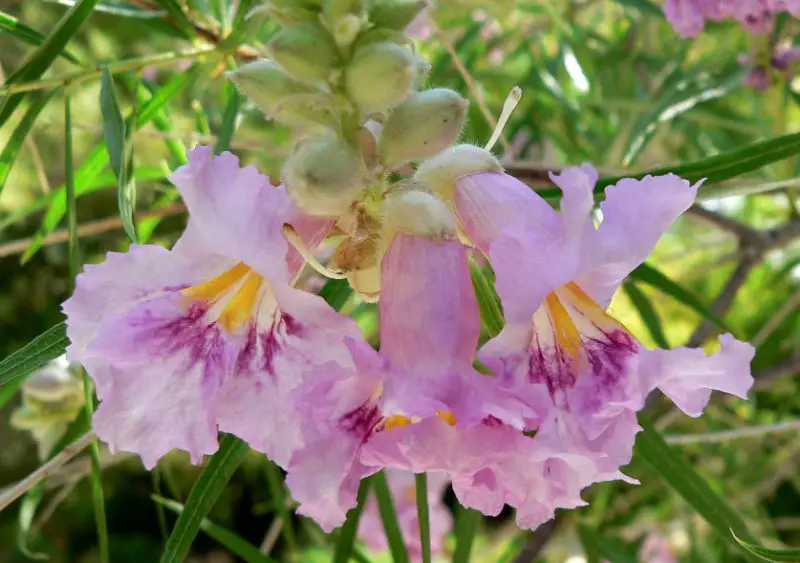
Desert Willow (Chilopsis linearis) is native to the Southwestern deserts of the US, from Southern California to regions of Texas. Thriving in hot climates, it features bright pink flowers with dark pink and yellow centers, also seen in lavender and violet hues. Attracting bees, it grows as a shrub but can mature into a tree, reaching heights of almost 30 feet.
Fairy-Slipper

Calypso bulbosa, or fairy slippers, has primarily pink flowers with sporadic white blossoms in late spring or early summer. They are native to North America, and their range extends from the Western states via the Rocky Mountains to the Northern states, New Mexico, and California. The pink blooms and sporadic white petals of these wildflowers set them apart.
Field Thistle

Field Thistle (Cirsium discolor) thrives in prairies, woodlands, and disturbed soils, ranking among North America’s tallest wildflowers, with some reaching up to 80 inches. Short-lived, they die after their pink flowers fade. Bees and hummingbirds are vital pollinators for these plants.
European Searocket

With its tiny pink flowers, the European Searocket (Cakile maritima) grows abundantly on both the Eastern and Western Coasts, particularly on dunes and beaches. Since it’s edible, bees like the European Honey Bee and the Cabbage Butterfly depend on it for pollen.
Beavertail Pricklypear
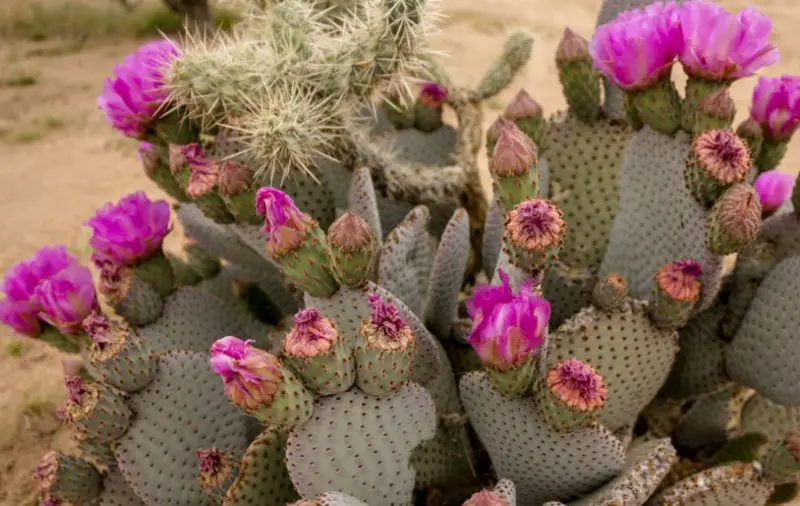
Originating in the Southern and Western United States, the Beavertail Pricklypear (Opuntia basilaris) is frequently found growing along the Colorado River. This variety of cactus may grow up to 15 inches tall and features many deep pink blossoms. A great place to see it is Joshua Tree National Park.
Devilshead
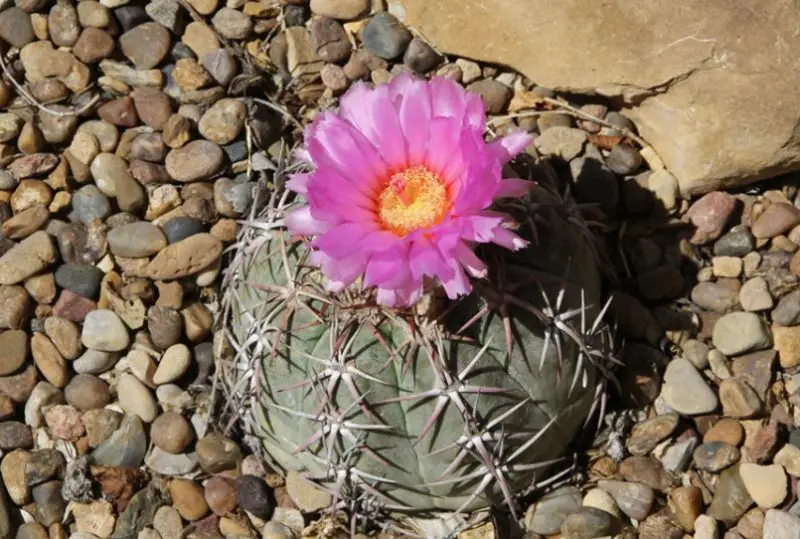
The Devilshead, also known as the Blue Barrel Cactus (Echinocactus horizonthalonius), features pink blooms and is nicknamed for its barrel-like shape. Growing up to 20 inches tall and 7 inches wide, it blooms twice a year in June and late summer. Native to North America, it is at risk of becoming endangered in the Chihuahuan Desert.
Virginia Spring Beauty
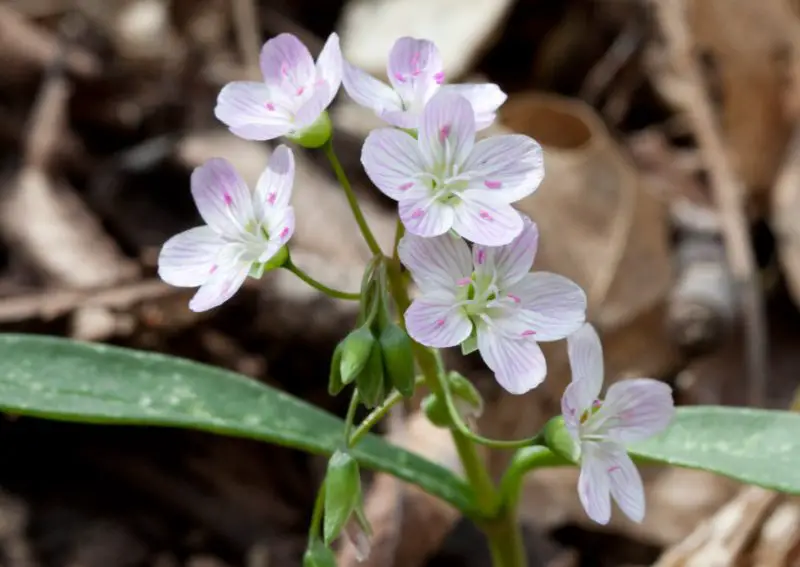
White or yellow petals surround the delicate pink blossoms, which can reach a width of up to 0.5 inches, on the Virginia Spring Beauty (Claytonia virginica). Its range allows it to be found in forest areas across North America, from Florida to Eastern Canada.
Frequently aided by wind or insects such as ants, this herbaceous plant—which is also utilized in traditional medicine—reproduces by way of tiny capsules that release seeds up to 0.1 inches in length.
Red Clover

Red Clover (Trifolium pratense) features distinctive pink flowers, crucial for local wildlife. However, white variations also exist, drawing bumblebees with their pollen richness. Beyond its ornamental value, Red Clover serves various purposes, including fodder for farms and culinary applications, even as flour. When cultivated, it requires careful management due to susceptibility to pests and viruses, despite growing in clusters.
Eastern Redbud
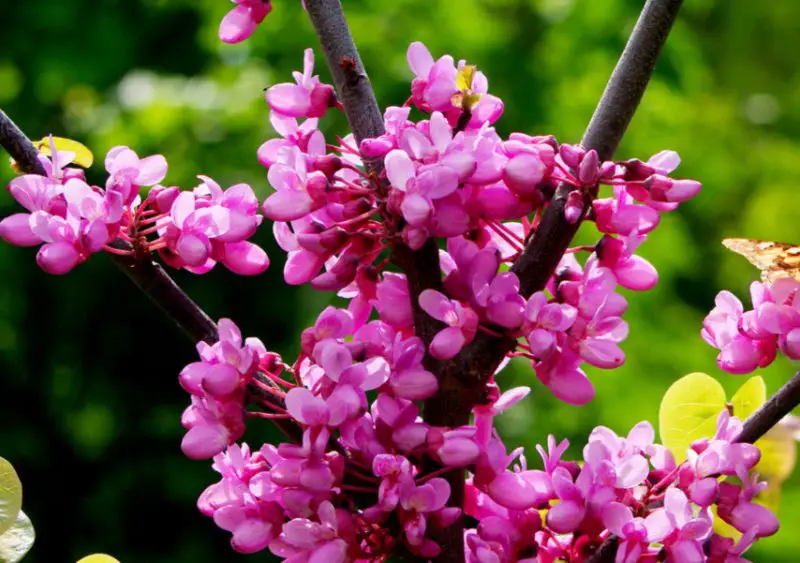
Eastern Redbud (Cercis canadensis) thrives across a wide North American range, including the West Coast and extending to Canada. Admired for its vibrant pink blossoms, this ornamental tree serves as food for animals and humans alike, with animals chewing its bark and humans enjoying its edible flowers. Cultivated in various cultivars, it adds color to gardens and attracts wildlife like Io Moths with its striking flowers and foliage.
Pinkladies
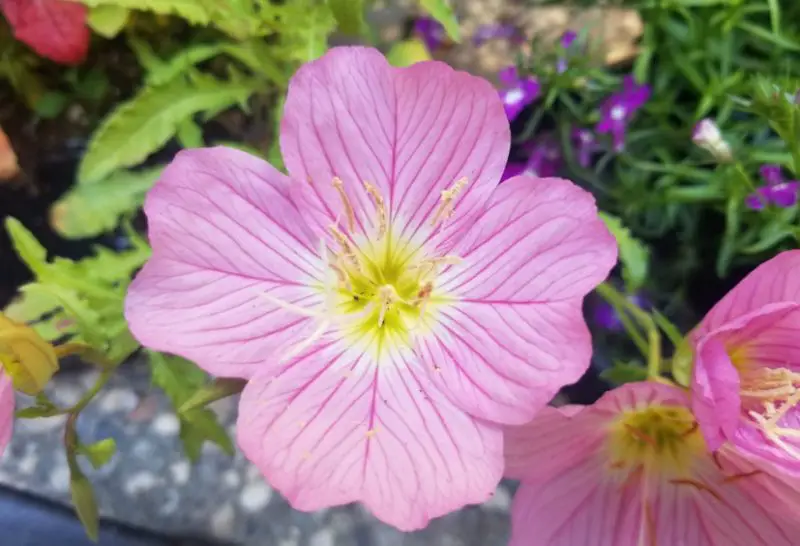
Pinkladies (Oenothera speciosa) share the same pink bloom charm as Eastern Redbuds but in a smaller package, reaching only 1 to 2 feet in height. These shrubs display numerous pink and yellow flowers from early in the season, sometimes blooming as early as February in the Southern regions, lasting until October. They open their blooms during the day, closing them at night or in rainy weather.
Pink Lady’s Slipper
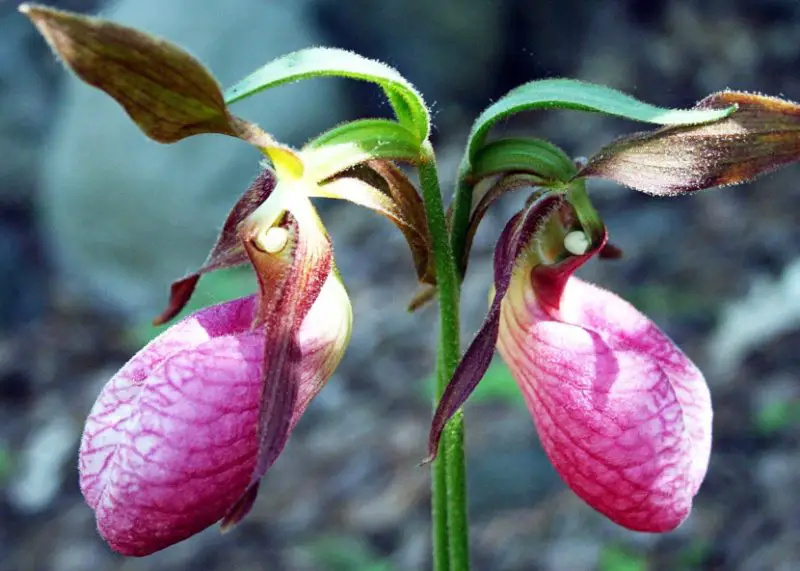
Just a few inches tall, the Pink Lady’s Slipper (Cypripedium acaule) has long, green leaves that are closer to the ground. It exhibits dark pink, purple, lavender, or magenta blossoms. It grows well at different elevations in a variety of woodland settings, from mixed woodlands to pine forests. Threats to its extinction exist in Eastern states like as New York, even though it is common in many US states.
Swamp Milkweed
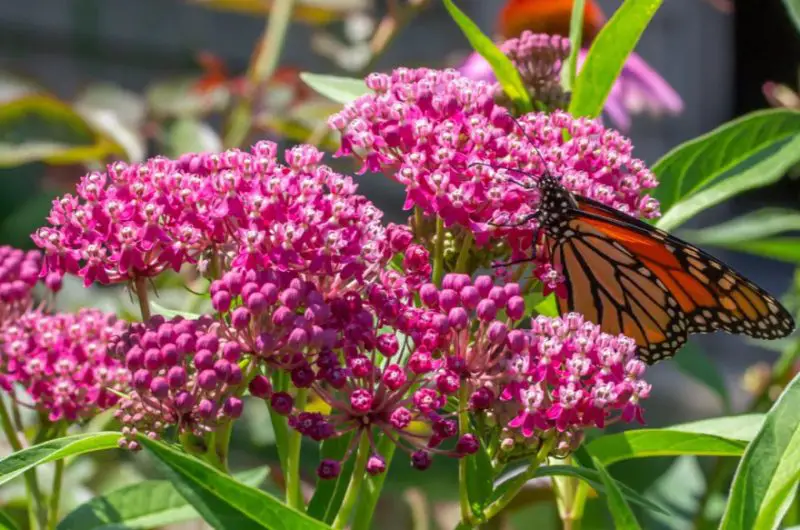
The common pink wildflower, Asclepias incarnata, or swamp milkweed, attracts a variety of species, including monarch butterflies. Crucial sources of nectar are its purple blossoms. These butterflies’ caterpillars eat the leaves of the plant. Although it grows well in marshy areas, pink and white versions can be grown in gardens. It is 59 inches tall at its tallest point.
Field Bindweed
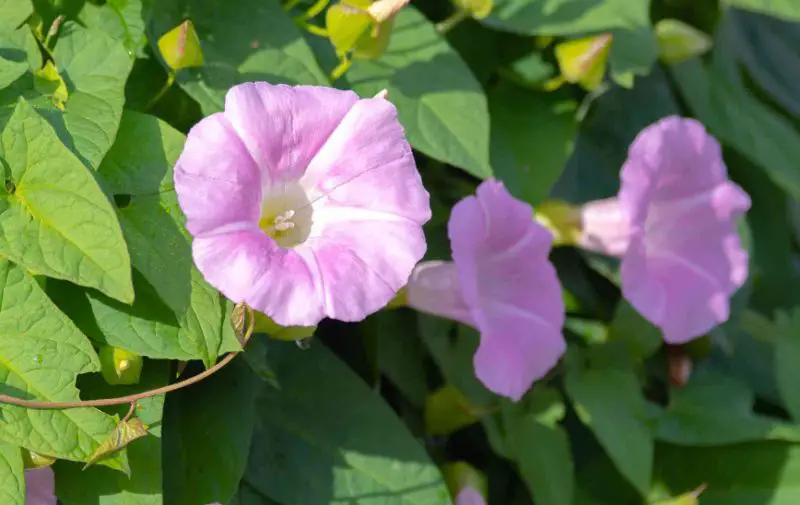
The pink, pink and white, or pure white flowers of field bindweed (Convolvulus arvensis) are a distinguishing feature of its distribution throughout North America and other parts of the world. It invades crops and grasslands and is frequently considered invasive. It is especially harmful to short crops or sparse vegetation. Mulching gardens and removing physical objects are two control techniques. It can grow up to 4 feet tall despite its diminutive stature.
Engelmann’s Hedgehog Cactus
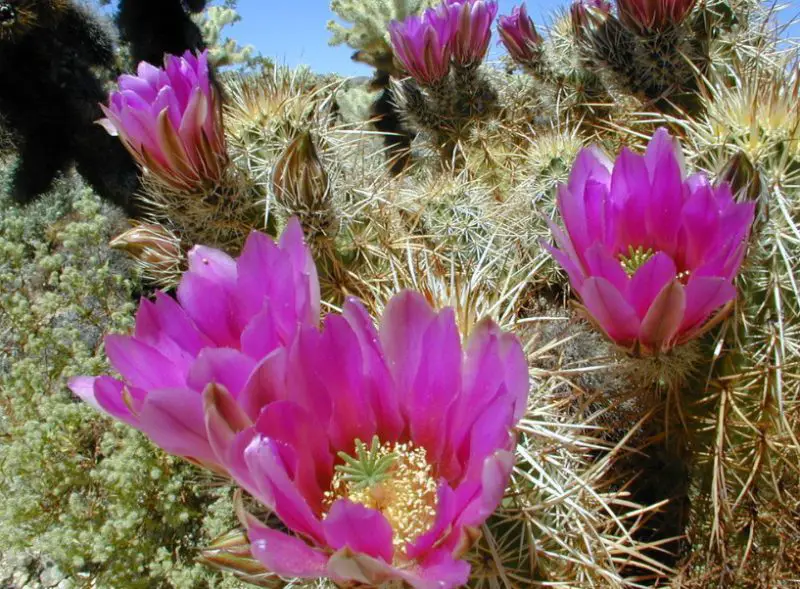
Engelmann’s Hedgehog Cactus (Echinocereus engelmannii) showcases striking dark pink flowers. Native to North America, particularly prominent in the Southern states like California, Texas, Arizona, and New Mexico. Alongside its flowers, it produces small pink fruits. Thriving at diverse altitudes, multiple subspecies grow up to thousands of feet. Varieties also extend into Baja California to the south.
Broad-Leaved Sweet Pea
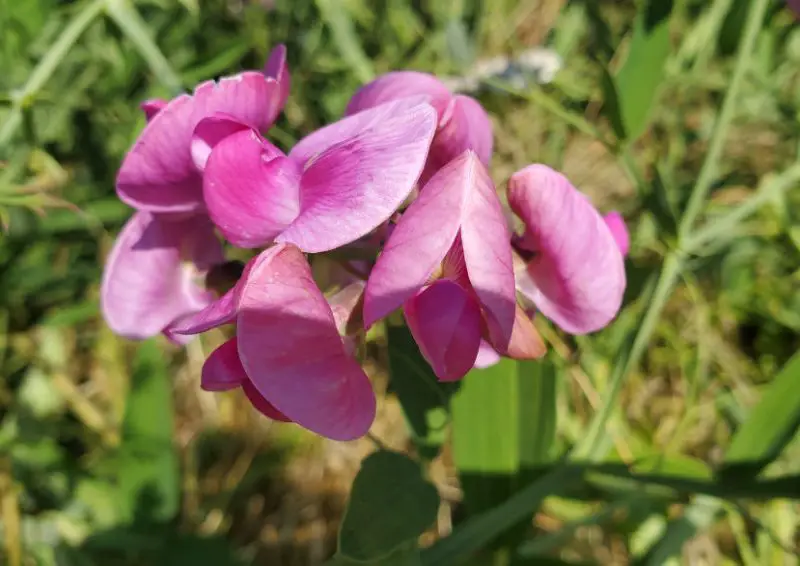
Broad-Leaved Sweet Pea (Lathyrus latifolius) displays flowers adorned with 3-4 large pink and white petals, thriving in moist soils under full sun. Often found in loamy or clay soils, it spreads rapidly via rhizomes, warranting careful management in gardens. Its blooms entice various pollinators, including bumblebees, adding to its ecological significance.
People Who Read This Also Read:






